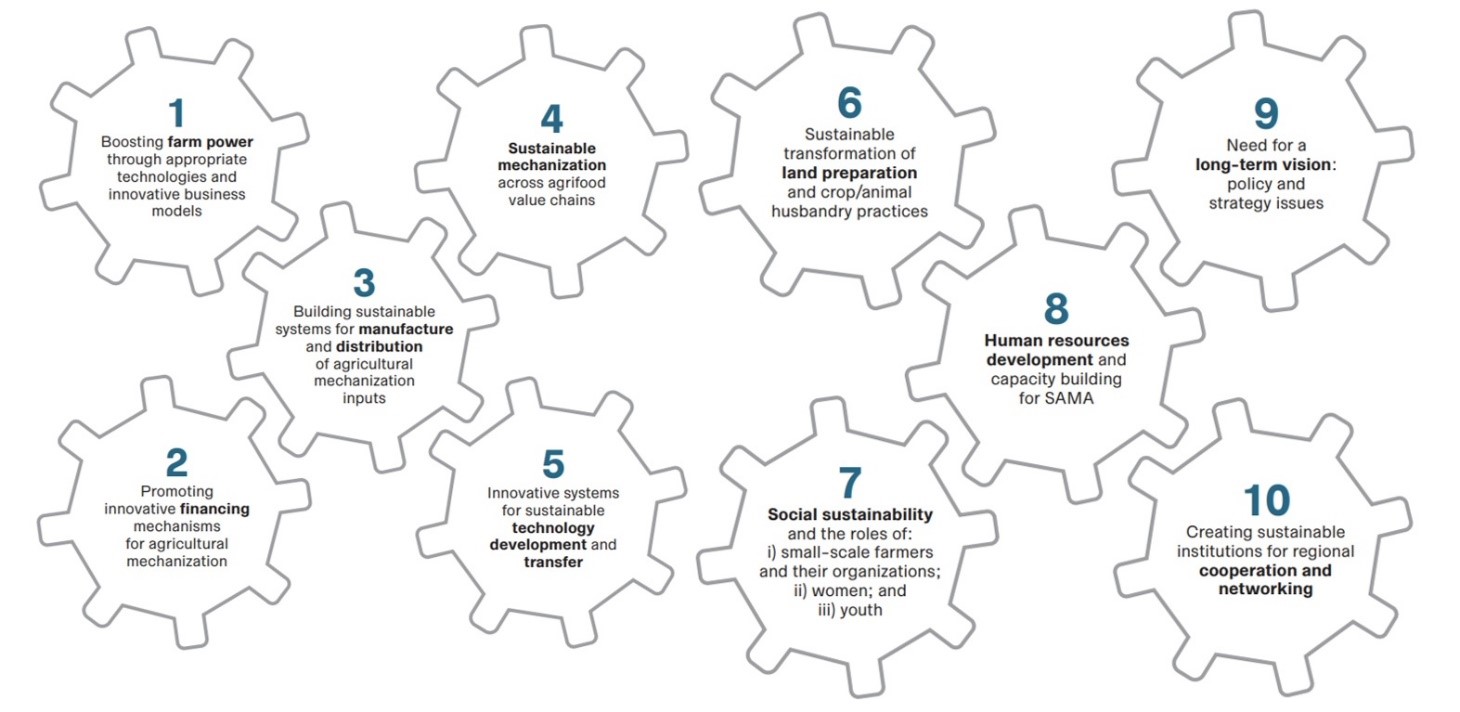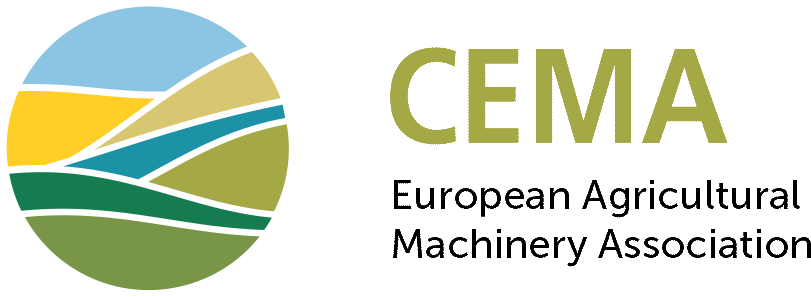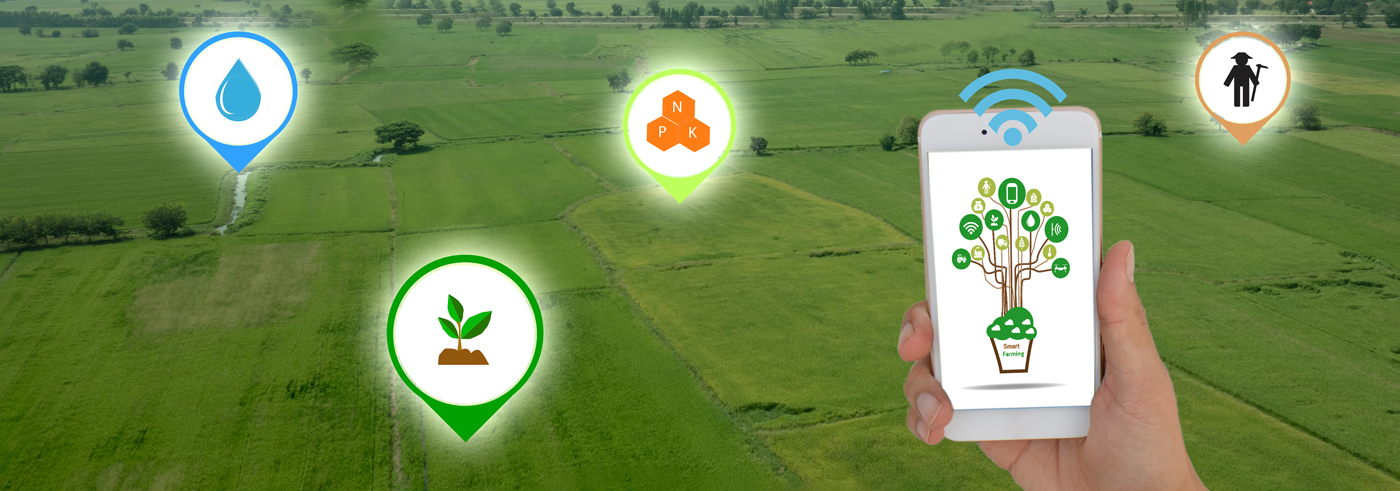- Document: CEMA_Promoting_SAMA_Position_2019.pdf
A fragmented Europe leads the world’s effort in development aid – the upcoming comprehensive strategy for Africa must support capacity building and mechanization in agriculture.
READ THE FULL DOCUMENT HERE
By far, the EU is Africa’s first partner in trade, in foreign investment and in development. As recently demonstrated by the OECD in its annual assessment of Development Aid efforts[1], Member States of the European Union collectively represent by far the largest global providers of Official Development Assistance (ODA). EU Member States participating to the OECD’s Development Assistance Committee (DAC) provided USD 87.4 billion of net ODA flows in 2018, to which must be added the ODA provided by non DAC-EU countries. This effort, although still fragmented at National EU Member State level, significantly outweighs the net ODA flows contributed by other G7 economies such as the United States (USD 33,7 billion), Japan (USD 10,1 billion) or Canada (USD 4,6 billion). On an individual country basis, the United States continues to be the largest donor, followed by Germany, the United Kingdom, Japan and France. The OECD assesses that net bilateral aid flows to Africa were USD 29,7 billion, a fall of 4% in real terms compared to 2017.
In parallel, the United Nations’ Food and Agriculture Organization (FAO) warned[2] that more than 820 million people did not have enough to eat in 2018, which is the third year of increase in a row. Achieving the Sustainable Development Goal of Zero Hunger by 2030 remains an “immense challenge”. The FAO assesses the situation to be most alarming in Africa, “as the region has the highest rates of hunger in the world and which are continuing to slowly but steadily rise in almost all subregions.” The UN agency adds that “in addition to climate and conflict, economic slowdowns and downturns are driving the rise.” The European Agricultural Machinery Industry represented through CEMA - The European Agricultural Machinery Association – welcomes the Evaluation roadmap of the Common Agricultural Policy‘s impact on the sustainable management of the soil. The European Agricultural Machinery Industry drives innovation and encourages technology uptake in Farming. CEMA is however concerned that the European Commission’s Roadmap does not identify agricultural machinery and solutions as a key stakeholder consulted in the review.
European Commission President Ursula von der Leyen entrusted[3] the role of Commissioner for International Partnerships with the responsibility to ensure that “the European model of development evolves in line with new global realities”. This model “should be strategic and effective, should create value for money and should contribute to our wider political priorities.” In particular, Commissioner for International Partnerships Jutta Urpilainen is tasked to “make the most of the political, economic and investment opportunities that Africa, with its growing economies, populations and digital innovations, presents” and develop a new comprehensive strategy for Africa, creating a partnership of equals and mutual interest. Amongst other priorities, Commissioner Urpilainen must also ensure that “Europe’s external financial assistance promotes the United Nations’ 2030 Agenda for Sustainable Development and the Sustainable Development Goals within it.”
CEMA, the association representing the European agricultural machinery industry, calls on the new European Commission and on the Member States of the European Union to mainstream Sustainable Agriculture Mechanization in Africa as a key enabler in the upcoming Comprehensive Strategy for Africa, building on the Sustainable Agricultural Mechanization framework for Africa prepared by the FAO[4], on the Africa-Europe Alliance for Sustainable Investment and Jobs[5], and on the 2019 Africa-Europe alliance political declaration for a stronger partnership in agriculture, food and farming[6]. On the basis of the 10 SAMA elements developed by the FAO, CEMA recommends a dual approach to mainstream sustainable agriculture mechanization in Africa, involving both top-down and bottom-up actions under the prerequisite of a robust governance system.

From “Sustainable Agricultural Mechanization – a Framework for Africa” (FAO)
CEMA-FAO alignment:
- Several drivers, such as the rise in global food prices, demographic trends and food security challenges, increasing urbanisation and environmental challenges, as well as the emergence of different external aid schemes and new suppliers of agricultural machinery, directly impact agricultural mechanization in Africa. Many African governments have increased investment in agricultural productions and agri-food processing, but multiple challenges remain;
- While keeping in mind the need to seriously rethink the transformation of agriculture and sustainable mechanization in Africa at all governance levels, FAO and the European Agricultural Machinery Industry Association (CEMA) forged a partnership in 2015 that aims to promote wider use of sustainable agricultural mechanization in developing countries;
- CEMA and FAO are working together to manage and disseminate knowledge on sustainable approaches to agricultural mechanization. The aim is also to jointly develop technical programmes to support innovation in mechanization and facilitate the implementation of sustainable mechanization initiatives at the field level;
- Tailored, inclusive, and integrated approaches to agricultural mechanization can make a real difference in increasing the welfare of farm households and create positive dynamics and opportunities for economic growth in rural areas;
- One main focus of the partnership is on capacity building activities in Africa, where human muscle remains the most important power source for smallholder farmers. For example, in sub-Saharan Africa, humans provide 65 percent of the power required for land preparation compared to 40 percent in East Asia, 30 percent in South Asia and 25 percent in Latin America and the Caribbean;
CEMA and its main national members also actively promote the benefits of mechanization in global sustainable agriculture through AGRIEVOLUTION, the global alliance of agriculture equipment manufacturers launched on the shared belief that current issues and future challenges are best viewed from a global perspective and addressed on a global basis.
Main gaps and Enabling factors for Africa
Despite its potentiality, the agronomic yields in Africa remain low if compared with other regions of the world, and the gaps are widening.
|
Main Gaps |
Most farmers are smallholders, many of whom are poor. Africa has about 51 million farms of which 80% (or 41 million) are smaller than 2 ha in size (Lowder, Skoet, & Raney, 2016), and their numbers are still increasing in most countries (Headey, 2016; Jirström et al., 2011). |
|
A significant lack of the infrastructure and skills for the agricultural use of water although the availability of the water resource. |
|
|
A significant lack of training in good agricultural practices enabling to reach the yield per hectare of some areas less advantaged from a geo-climatic point of view. |
|
|
A significant lack of know-how for harvest, post-harvest, and adequate storage facilities in order to reduce food losses especially with regard to challenges due to climate change |
|
|
A significant lack of know-how for a transformation enabling to increase added value. |
|
|
A significant lack of funds for the production, which creates deficiencies in the whole agri-food chain and increases the uncultivated marginal lands. |
|
|
Gender disparities, with disproportionately concentration of women in 'lower skill' and lower paid positions. |
|
|
The Governance is not able to attend training and direct the actors involved in the logistics, to link national, regional and international markets. |
Food security remains the main concern.
This is due to several causes:
- One of the main drivers of the surge in consumers’ demand in Africa is the continent’s growing population;
- 37% of the African population is urbanized, and the UN foresees that by 2050 the urban population share will reach 56% (UN, 2014);
- African countries and public authorities must consider measures to mitigate potential food shortages or food distribution system disruptions in case the rural and urban population suffers from natural and human-made disasters.
How mechanization can support sustainable agriculture in Africa
The European Agricultural Machinery industry is aware of the challenges the world is facing today, with an unprecedented critical convergence of population growth, dwindling natural resources and the impacts of climate change. There is a pressing need to increase global food production to feed the growing, and increasingly urban, global population. Agricultural production must increase by 70% by 2050 at a global level, according to FAO’s figures. At the same time, the planet is suffering from a continuing degradation of the natural resource base, with soil and water resources jeopardized by conventional agricultural practices involving intensive and excessive soil tillage. Especially in developing countries, this leads to low productivity on family farms resulting in low family income and an inability to invest in appropriate agricultural mechanization inputs. In short, doing “business as usual” is not an option on the table if we want to avoid widespread food shortages.
In the last decades, the agricultural machinery industry has fully integrated the growing interest in Conservation Agriculture supported by mechanization.
(Conservation Agriculture is a complementary set of three general principles which are adapted locally to become compatible with the location specific environment. These general principles are minimal soil disturbance, maintaining a permanent organic soil cover, maintaining biodiversity in crop production).
Implementing Conservation Agriculture involves the adoption of specific equipment, through an uptake of specific technologies dealing with the reduction of tillage, appropriate sowing and fertilizer delivery practices.
Mechanization applied to Conservation Agriculture allows for a significant reduction of energy consumption compared to the technology used for tillage-based agriculture, since approximately half the energy is expended.
Mechanization in its broadest sense has great potential to increase productivity and improve livelihoods along the full agri-food value chain. This will include post-harvest operations such as storage and processing. It can also include food processing from simple packing of fresh produce for supermarket chains to more industrial type processing.
For sustainable mechanization initiatives to work, a proper and robust governance framework is a pre-requisite. Governmental complementary action is also needed on two levels: macro (national/regional) and micro (local):
- a) At the macro-level, the objective must be to enhance food security of the countries, in terms of food availability levels, i.e. volume, but also in terms of differentiation, infrastructure or support needed to enable national food security policies in the countries involved;
- b) At the micro or local levels of intervention, national policies must meet the potential (both agricultural and human) and the needs of communities at local level.
Discussing the solution: a dual approach to mainstream sustainable agriculture mechanization in Africa
Based on the experience on European manufacturers of agriculture machinery, several components can help define an overall framework in which macro, meso and micro levels of intervention can be designed, converging to a series of complementary objectives:
Top-down
- Review Food Security targets, plans and policies for each country involved (developed under the responsibility of the local African Governments), in light of the smallholder farm sector demand for appropriate mechanization, both for crop production, for processing and along the entire value chain. This also means that public authorities should consider the more appropriate agronomic and mechanization measures to meet primary food security objectives.
- Formulate an inclusive policy connecting of all the stakeholders to bring about the enabling factors in terms of development. These factors are:
- Agricultural potential (sustainable and productive agriculture), unleashing the potential of sustainable intensification for each country or region;
- Human potential (active population in the primary sector or related sectors), mobilisation of universities, extension services, African Farmers Unions (PAFO and regional/national farmers’ associations, AGRA, - ACT, local public and private organizations) to foster access to education, training, tangible or intangible resources (knowledge, processes, tools, etc.); Define an access to innovation strategy to endow local communities and businesses with the appropriate tools to realize their potential within the national or regional food security framework;
- Financial framework: financial support should be sought and provided by institutions such as the World Bank, IFAD, the FMI, EU, EIB, or AfDB, in order to set appropriate measure to foster investments in the enabling factors. Entrepreneurs will need to have access to the correct equipment, and this should involve facilitating their access to financial credit.
Bottom-up
The dual approach suggests the need to take stock of the current practices and actual requirements of the farmers. This should be done through evidence-base to identify the best options to match country-specific mechanization needs, in line with the overall objectives of Food Security Plans, and the perceived needs of local communities. Therefore, a series of investigations prior to action are needed to:
- Collect baseline data on the current knowledge, attitude, and practices,
- Define widely accepted agricultural sustainability and productivity metrics,
- Identify and assess the readiness and potential of local communities to contribute to the objectives,
- Take into account current agricultural practices along the food value chain (types of cultivations, storage and agri-food processing, levels of food security met, margins of improvement towards sustainability, productivity, and reduction of post-harvest food loss);
- Consider current available equipment and asset management (instruments and machines used, structure of ownership, maintenance and management capacities, acquisition, or commissioning practices, etc.).
For mechanization to work on the ground, the involvement of local communities is of fundamental importance. This bottom up approach would define the critical training needs to reach the minimum level of competence.
We believe that the dual approach (“top-down and bottom-up”) can best serve the specific and different requests for Sustainable Agriculture Mechanization in Africa. The most important result will be the improvement of food security for the country involved and the concrete development of economic units (small farm, village…). These will be able to produce sufficient agricultural goods for their own needs while bringing potential extra-production to the market and further engaging viable economic development.
Reaching these two goals will require on the one hand training for the local institutions (Ministries of Agriculture) in defining Sustainable Agricultural Mechanization Strategies and how to implement them; and, on the other hand, the involvement of local agricultural universities for the necessary agronomic practices as well as the engagement of a larger range of stakeholders to encourage growth not only in terms of mechanization, but also of management.
The conservation of natural capital (especially soil, water and forests) requires a renewed focus on sustainable land management. Supply chains for sustainable mechanization options need to be strengthened to encourage increased demand. Because of rural-urban migration and the impact of pandemic diseases, female-headed farm families are becoming more prevalent, especially in SSA.
Improving access to farm power through the provision of suitably designed equipment needs to be addressed by the actors in the farm power provision supply chains.
Promoting mechanization in agriculture for men and women means that more tasks can be completed at the right time, more efficiently and saving labour and energy. However, the equipment has to be compatible with the social, economic and environmental conditions in which it will work, in order to achieve sustainable crop production intensification.
An example of the type of equipment that can easily adapt to the context of developing countries is the range of low-cost smaller horsepower tractors. This type of tractor can be attached to planters designed to operate on soils under zero tillage regimes by depositing seeds directly into the soil with minimal disturbance.
Compared to traditional tillage-based practices, direct seeding is far more energy efficient and less time consuming. It also reduces input losses and drudgery and, over time, achieves better crop yields when combined with adequate conservation agriculture practices. The effect on the environment is also very positive as soil erosion and compaction are eliminated and biodiversity is enhanced.
Direct planters are also well suited to animal traction which can also be used to pull small carts for transporting people and of goods. Low horsepower tractors, and indeed stationary engines, can also be used by smallholders to power other agricultural equipment, such as pumps, threshers and mills, improving farming conditions and productivity and coping with problems such as labour shortage and inadequate processing times.
Other examples of hand operated equipment that have a huge impact on labour efficiency include improved maize shellers or pumps for water lifting.
Conclusions
Mechanization is to be viewed as a means to achieve two main objectives: sustainability and food security. The mechanizations of the agricultural processes can and should be adapted to the specific needs of the local communities and of entire regions, depending on the policy goals set by the Public Authorities. This suggests that high-level stakeholders should take in great account the need to apply a dual approach to address the challenges ahead. Sustainable mechanization involves the application of different forms of skills, power sources (from manual to engine), equipment, along the agri-food value chain. As a result, mechanization must meet farmers’ needs effectively while improving productivity and competitiveness. The recommended dual approach brings with it a significant value since it considers economic, financial, social, environmental and cultural issues at stake. It recognizes that mechanization can be provided to smallholders in a number of different ways if both the public and private sectors work together to nurture an attractive environment where the private sector can do business and provide the necessary financial and appropriate training support.
[1] https://www.oecd.org/newsroom/development-aid-drops-in-2018-especially-to-neediest-countries.htm
[2] http://www.fao.org/state-of-food-security-nutrition/en/ and http://www.fao.org/3/ca5162en/ca5162en.pdf
[3] https://ec.europa.eu/commission/files/jutta-urpilainens-mission-letter_en
[4] http://www.fao.org/3/CA1136EN/ca1136en.pdf
[5] https://ec.europa.eu/commission/africaeuropealliance_en
[6] https://ec.europa.eu/info/news/africa-europe-alliance-political-declaration-stronger-partnership-agriculture-food-and-farming-2019-jun-21_en
Attachment
 CEMA_Promoting_SAMA_Position_2019.pdf
CEMA_Promoting_SAMA_Position_2019.pdf






